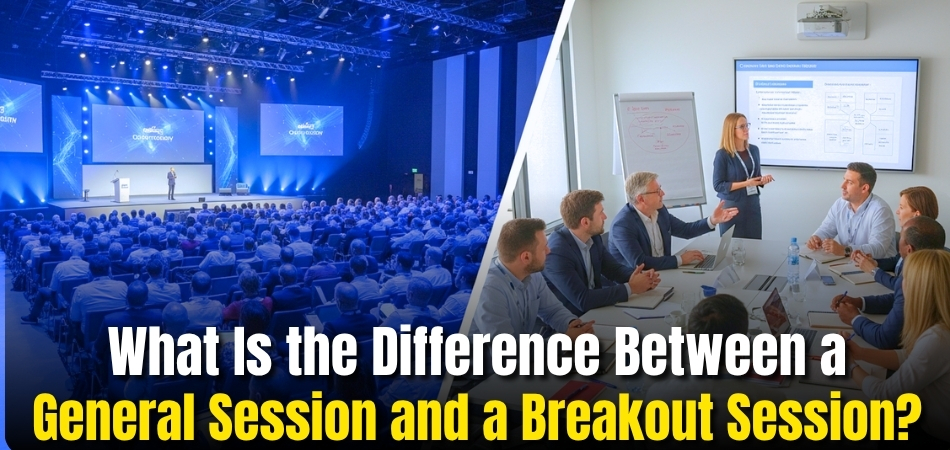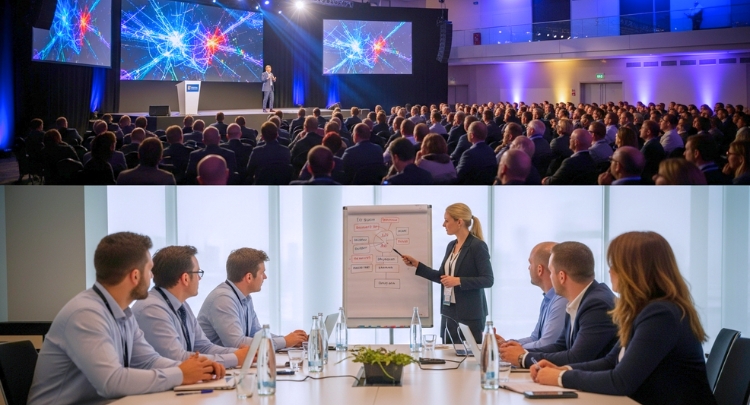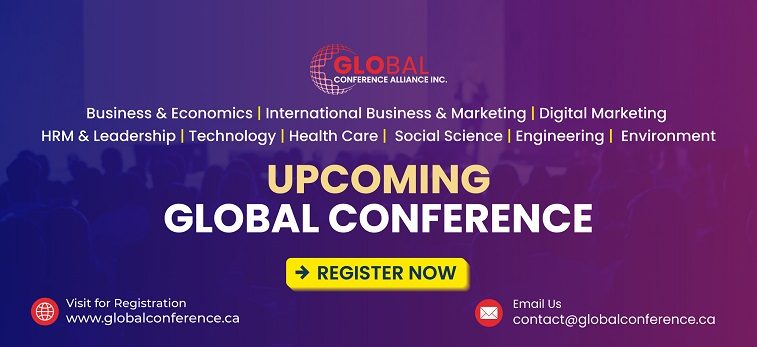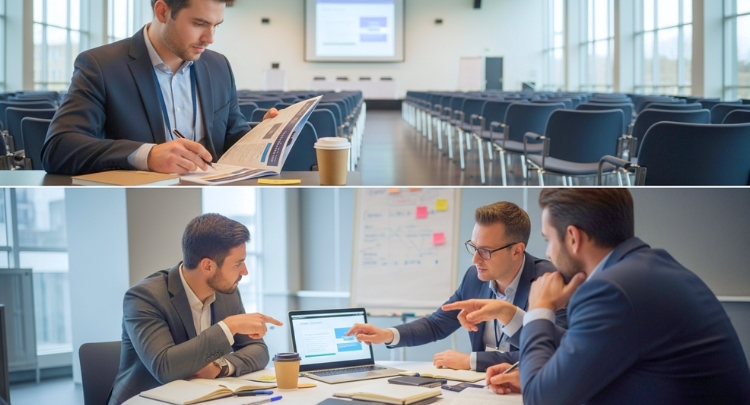Every event brings people together to learn, connect, and share ideas. Some parts are grand and inspiring, while others are small and hands-on. These are called a General Session and a Breakout Session, and both make every event complete. You might be wondering, what is the difference between a general session and a breakout session?
A general session is a large meeting where all attendees come together to hear key messages, announcements, or keynote talks. It focuses on the main theme of the event and often includes top speakers. A breakout session, on the other hand, involves smaller groups that discuss specific topics in detail through workshops or group talks.
Do you want to understand how these two sessions really differ and how each one works? If you are curious, keep reading. This article explains every detail you need to know about general and breakout sessions, their purpose, format, and why both are important in any event.
What Is the Difference Between a General Session and a Breakout Session?
When attending conferences or business events, you’ll often see sessions labeled as general sessions or breakout sessions. Both types play an important role in sharing information and keeping the audience engaged. Understanding how they differ helps organizers and attendees know what to expect from each one.
Definition
What is a General Session?
A general session is a large gathering where all attendees come together in one place. It usually features keynote speakers, event introductions, or major announcements that apply to everyone. These sessions are designed to set the tone for the event and bring unity among participants.
Key Features of a General Session:
- All attendees attend together in a large room or hall
- Focus on big-picture topics or event themes
- Often includes keynote speeches or presentations from top leaders
- Sets the main tone and direction of the event
- Usually held at the start or end of the event
What is a Breakout Session?
A breakout session is a smaller meeting that happens after or during general sessions. These are focused discussions or workshops where participants split into groups to explore specific topics in more detail. Breakout sessions encourage more interaction and allow participants to share ideas freely.
Key Features of a Breakout Session:
- Smaller group of participants
- Focused on one specific topic or activity
- Encourages discussion, questions, and group interaction
- May involve workshops, case studies, or panel talks
- Often happens in multiple rooms at the same time
Difference Between a General Session and a Breakout Session
| Aspect | General Session | Breakout Session |
| Audience Size | Large, includes all event attendees | Small, limited to interested participants |
| Purpose | To share key messages, announcements, or themes | To discuss specific topics or hands-on learning |
| Format | Formal presentations or speeches | Interactive discussions or workshops |
| Atmosphere | Structured and one-way communication | Relaxed and encourages participation |
| Location | Held in the main hall or auditorium | Conducted in smaller rooms or sections |
| Speaker Type | Keynote speakers, executives, or VIPs | Experts, facilitators, or trainers |
| Timing | Usually at the beginning or end of the event | Scheduled throughout the day between sessions |
| Interaction Level | Limited interaction from the audience | High level of audience engagement and feedback |
Audience Size
A general session includes everyone attending the event in one big gathering. It often takes place in a large hall or ballroom that can hold hundreds or even thousands of people. The goal is to bring the entire audience together to share common information. In contrast, a breakout session has a smaller and more focused group, usually made up of people interested in a specific topic.
Purpose
The main purpose of a general session is to deliver key messages, make announcements, or set the tone for the event. It often covers broad subjects that matter to all attendees. On the other hand, a breakout session aims to provide detailed discussions or practical learning on certain topics. These smaller sessions help participants gain deeper knowledge in areas that interest them most.
Format
A general session usually follows a formal structure with planned speeches or presentations. The flow is organized, and most communication goes from the speaker to the audience. Breakout sessions, however, use a more interactive format that may include group work or open discussions. This setup allows participants to share thoughts and take part in hands-on activities.
Atmosphere
General sessions tend to have a professional and structured environment. Since they involve large audiences, there is less chance for personal interaction. Breakout sessions, in contrast, feel more relaxed and engaging. People can freely ask questions, share ideas, and build connections in a smaller setting.
Location
General sessions are held in big halls or auditoriums that can fit all attendees. They often serve as the main event space for the conference. Breakout sessions are usually set up in separate, smaller rooms or meeting areas. This allows multiple sessions to run at the same time on different topics.
Speaker Type
In a general session, the speakers are often keynote guests, top executives, or well-known figures. They focus on delivering high-level insights or motivational talks. Breakout sessions feature speakers who are experts or trainers in specific fields. These speakers guide smaller groups through focused discussions or skill-based learning.
Timing
General sessions usually take place at key points of the event, such as the opening or closing. They are designed to welcome everyone or wrap up the entire conference. In many upcoming conferences, breakout sessions are scheduled throughout the day to give attendees more choices. These sessions run between general sessions, allowing participants to choose which ones to attend.
Interaction Level
Audience interaction is limited in general sessions because of the large crowd size. Most of the communication happens from the stage to the audience. Breakout sessions are the opposite, as they encourage active participation. Attendees can ask questions, share opinions, and even take part in small group discussions or activities.
Why Does Knowing the Difference Between a General Session and a Breakout Session Matter?
Any event can be made more successful and pleasurable by knowing the distinction between a general session and a breakout session. Both sessions serve unique goals, and knowing how they work helps ensure better planning and participation. If you want to maximize the impact of your upcoming event, read on to find why this distinction is important for both planners and guests.
Organizer’s Perspective
Better Event Planning
Organizers can plan the event more efficiently when they understand the role of each session type. General sessions help them deliver key messages to everyone at once. Breakout sessions, on the other hand, allow them to organize smaller, focused discussions. This mix keeps the event well-structured and engaging for all participants.
Balanced Audience Engagement
By including both session types, organizers can maintain a balance between listening and interaction. General sessions keep everyone united under one message, while breakout sessions give people space to share ideas. This variety prevents the event from feeling repetitive or dull. It also helps maintain audience interest throughout the day.
Effective Time Management
Knowing the difference allows organizers to schedule sessions wisely. They can set aside peak times for general sessions and use other slots for smaller, topic-based breakouts. This approach ensures that the schedule flows smoothly without overlap or confusion. It also helps participants get the most value from the time they spend at the event.
Clear Goal Setting
Understanding both session types helps organizers set clear goals for each. General sessions can focus on vision and inspiration, while breakout sessions can handle problem-solving or skill development. This clarity makes it easier to measure the success of each session. It also ensures that every part of the event supports the main purpose.
Attendees’ Perspective
Smarter Session Choices
Attendees who know the difference can plan which sessions to attend based on their interests. They can decide to listen to inspiring talks in general sessions and join detailed discussions in breakout sessions. This helps them get the most relevant information for their needs. It also makes their event experience more productive.
Improved Learning Experience
General sessions help attendees understand the big picture, while breakout sessions let them explore details. This mix of learning styles keeps things fresh and engaging. Attendees can take in key ideas and then apply or discuss them in smaller groups. It leads to better understanding and practical learning.
More Networking Opportunities
Breakout sessions give attendees a chance to meet people who share similar interests. They can ask questions, share experiences, and build connections. Meanwhile, general sessions expose them to leaders and speakers from different fields. Together, both formats create a well-rounded networking experience.
Better Time Management
By knowing what each session offers, attendees can manage their time wisely. They can attend general sessions to hear important announcements and breakout sessions to dive deeper into specific topics. This balance helps them stay organized throughout the event. It also ensures they don’t miss out on key learning moments.
Can You Attend Both Session Types in One Event?
Yes, you can attend both session types in one event. Most events plan their schedules so participants can join each session without confusion. General sessions are usually placed at the start or end, while breakout sessions run in between. This setup helps everyone enjoy the main presentations and then take part in smaller, focused discussions easily.
Attending both types gives a complete event experience filled with learning and networking. General sessions bring all attendees together to hear key messages and updates. Breakout sessions allow people to share thoughts, ask questions, and connect with others who share the same interests.
Event planners usually keep the timing flexible so participants can move comfortably between sessions. They also make sure the duration of conference breakout sessions matches well with the overall schedule to avoid rush or delay. This thoughtful planning keeps everything organized and helps participants gain the most from every part of the event.
Why Do Event Organizers Include Both Session Formats?
Events are planned to teach, connect, and inspire people in simple ways. Having both session formats makes this goal easier to reach. General sessions bring everyone together, while breakout sessions keep things personal and engaging. Let’s look at how having both makes the event inspiring and informative at the same time.
Creates a Perfect Balance
Having both session types keeps the event balanced for all kinds of learners. General sessions give wide knowledge and motivation, while breakout sessions offer practical tips. This mix makes the experience rich and easy to follow. People enjoy listening, learning, and sharing without feeling bored or lost during the event.
Keeps Everyone Engaged
A mix of large and small sessions helps hold attention throughout the day. Big gatherings bring excitement and energy, while small ones encourage open talks. Attendees feel included in both formats, making them more interested in every part. This setup also allows time to relax between sessions without losing focus.
Supports Different Learning Styles
People learn differently, and event planners understand that well. Some prefer listening to strong speeches in general sessions. Others enjoy discussions in smaller groups during breakout sessions. By offering both, organizers make sure everyone learns comfortably and enjoys the full event experience.
Builds Stronger Connections
General sessions help people meet everyone at once. But real networking happens more easily in smaller breakout discussions. These group talks allow people to share ideas and meet others with similar goals. This balance gives both a wide reach and a close connection, which is ideal for any conference.
Encourages Active Participation
Breakout sessions encourage people to speak, share stories, and ask questions. Unlike general sessions, everyone gets a voice in the room. This helps participants understand topics better and stay involved. Event organizers add both styles to make sure learning is active and fun for everyone.
Provides Inspiration and Information Together
General sessions bring motivation through inspiring speakers and key messages. Breakout sessions, then turn those ideas into real discussions and useful learning. This mix ensures people leave with both inspiration and knowledge. It makes the event more meaningful and memorable for everyone who attends.
Improves Overall Event Experience
Events that combine both sessions feel more complete and well-planned. Attendees get the best of both worlds: learning from top speakers and engaging in group talks. This keeps energy levels high and minds fresh. A balanced plan like this ensures every attendee leaves satisfied and informed.
Which Session Type Helps Better With Networking?
Making new connections is easier when people gather in smaller groups that allow open and friendly talks. Large audiences often make it harder to communicate freely. That is why smaller, focused discussions work much better for sharing ideas and meeting others comfortably.
While main sessions are great for learning, they don’t offer much space for personal conversation among attendees. Everyone listens to one speaker, and there’s little time to talk or ask questions. This setup makes it harder to start genuine conversations or form strong professional links.
Networking grows best when discussions feel natural and relaxed during events. A breakout session at a conference often creates this perfect environment for connection. These smaller sessions help people share ideas, exchange experiences, and build trust that leads to meaningful and lasting professional relationships.
How Should You Prepare for Each Session Type?
Getting ready for different session types helps you learn better and stay confident. Every session has its own purpose and style. When you prepare the right way, you enjoy more and understand things easily. Let’s look at some simple tips below to help you get ready for both types:
Preparing for General Sessions
Arrive Early
General sessions usually attract big crowds, so reaching early ensures you get a good seat and stay relaxed. It also gives you time to look through the schedule or speaker list. Being early helps you start the session calmly and stay focused throughout.
Take Good Notes
Carry a notebook or device to write down important points shared by the speakers. Note the key ideas, statistics, and quotes that stand out. Reviewing these notes later helps you remember and apply what you learned.
Stay Attentive
Keep your focus on the speaker and avoid distractions like checking your phone. Many general sessions share insights that set the tone for the rest of the event. Paying close attention helps you stay updated on important announcements or themes.
Listen for Key Messages
Every speaker has a main message or takeaway they want to share. Try to identify that message and understand how it connects to the event’s goal. This will help you follow related discussions in later sessions.
Engage After the Session
When the session ends, take a few minutes to talk with nearby attendees. Discuss what you learned or share your thoughts. This small interaction can lead to new connections and a deeper understanding.
Preparing for Breakout Sessions
Review the Topic Beforehand
Read the session details and know the topic before joining. This helps you join the discussion confidently and ask thoughtful questions. Being prepared also makes the conversation smoother and more engaging.
Join the Conversation
Breakout sessions are all about participation, so don’t hesitate to speak up. Share your experiences, listen to others, and ask meaningful questions. Your input can add real value to the discussion and help others learn as well.
Network and Follow Up
Take advantage of the smaller setting to meet new people. Exchange contacts or social links with those who share similar interests. Following up later keeps the connection strong and may open future opportunities.
Be Respectful and Open-Minded
Everyone comes with different ideas and opinions, so listen carefully before responding. Respect others’ views even if you disagree. An open attitude helps create a friendly and productive learning space.
Manage Your Time Wisely
The duration of breakout sessions is usually short, so use your time well. Stay focused on the discussion and avoid side talks. Being mindful of time helps you make the most of the learning and networking opportunities.
Frequently Asked Questions
If you are new to events or conferences, it can be confusing to understand session types and their purpose. General sessions and breakout sessions may sound similar, but they work very differently. These FAQs answer common questions to help you understand their structure, benefits, and uses.
How Long Does a Typical General Session Last?
A general session usually lasts between 60 to 90 minutes. The timing depends on the number of speakers and the event schedule. Some large conferences may extend them to two hours if there are multiple keynote talks. These sessions are designed to give enough time for sharing key information without losing audience attention.
Are General Sessions Always Mandatory to Attend?
In most conferences, general sessions are mandatory because they contain key announcements or event openings. These sessions are meant for everyone to join together and understand the main purpose of the event. However, some smaller events may keep attendance flexible. It’s always best to check the event’s schedule or guide for clear rules.
Do Breakout Sessions Have Limited Seats?
Yes, breakout sessions often have limited seats due to their smaller group format. This is done to maintain a focused and engaging discussion environment. Because of this, it’s a good idea to register early for sessions that interest you most. Early sign-ups ensure you get a spot in your preferred topic group.
Who Usually Hosts a General Session?
A general session is usually hosted by top executives, event organizers, or keynote speakers. These people represent the overall event goals and theme. Their talks often include motivational messages, major updates, and upcoming plans. Having recognized speakers helps create excitement and sets the right tone for the event.
What Type of Audience Benefits Most from Breakout Sessions?
Breakout sessions are great for people who enjoy active learning and group discussions. Attendees who like to ask questions and share opinions find these sessions helpful. They offer space for detailed learning on specific topics. This makes them perfect for those who prefer hands-on and interactive experiences over large lectures.
How Should You Choose Which Breakout Session to Attend?
Start by checking the event schedule and session descriptions carefully. Choose the topics that best match your interests or career goals. You can also ask other attendees or organizers for recommendations. Picking sessions that relate to your field helps you gain the most useful and practical knowledge.
What Equipment Is Commonly Used in General Sessions?
General sessions often use microphones, large screens, projectors, and stage lighting. These tools help speakers reach a large audience effectively. Some events also use live streaming for online viewers. This setup ensures that everyone can hear clearly and stay focused on the presentation.
How Are Breakout Sessions Usually Structured?
Breakout sessions often start with a short introduction by the facilitator. Then, participants engage in group discussions, activities, or problem-solving tasks. The session may end with a summary or open Q&A. This flexible structure encourages sharing ideas and learning through interaction instead of just listening.
Bottom Lines
Every event feels more enjoyable when you understand how each part works. Knowing what to expect makes learning smoother and networking easier. It also helps you plan your time wisely and get the most out of every session.
Understanding what is the difference between a general session and a breakout session gives you the power to participate better. You know when to listen, when to speak, and when to connect. This knowledge makes your whole conference experience more rewarding and stress-free.
So, the next time you attend an event, make sure to join both session types. Listen, share, and engage with others around you. You’ll leave not only with new ideas but also with stronger connections and lasting memories from a well-balanced experience.








